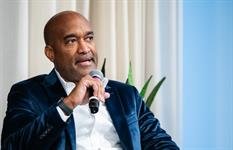It’s not what they think it is.

When you start working with an executive to prep for an interview, the first question is often about what they think their weaknesses are as a communicator. You might get answers like, “I stumble over my words,” or, “I say ‘um’ too much.”
But Lynn Smith, a veteran of the TV industry and a media training consultant, says the root cause of these issues is fear.
“They’re afraid that people aren’t going to like what they say. They’re afraid that they’re going to say the wrong thing and that the stock’s going to go down. They’re afraid that people aren’t going to think they’re smart,” Smith said. “All of those phrases have been said to me by some of the most successful CEOs in the country.”
That fear is what leads to stumbles on the biggest stages. But by acknowledging and tackling the fear head on, executives can push past their emotions to deliver media performances that drive real results.
Here’s how to help them do it.
The science of fear
Fear isn’t just an emotion – it’s a biological process that’s designed to protect us. In ancient times, it protected us from saber tooth tiger attacks. Now, it’s trying to save us from professional embarrassment. But the physiological response is largely the same.
“(Our body is) simply protecting us the way it was designed to protect us,” Smith explained. “So it sends all of those physical reactions, the flow of cortisol spikes, so you start to get sweaty hands, your voice starts to shake, you maybe get that feeling in the pit of your stomach, and that results in the outcome of people can tell you’re nervous.”
Smith walks clients, including members of Ragan’s Communications Leadership Council, through a four-step process to short-circuit this fear response.
- Name the brain bully
The brain bully, in Smith’s vernacular, is the person in your head who tells you you’re going to fail. Everyone’s going to hate you. Simply naming that voice – like Mildred or Eustace — and separating it from yourself can have a big impact on how you view fear.
- Shift your perspective
Once the exec has given their bully a name, it’s time to start thinking differently about fear. Rather than ruminating on “what ifs,” Smith encourages leaders to affirm that they’ve done the work they need to succeed.
“Reframe the thought from, ‘what if I screw this up’ to ‘I have prepared properly,’” Smith said.
- Use a power phrase
Even the most successful people in the world need to hype themselves up before a big interview. Smith recommends a specific power phrase just before executives walk into the main event: Address the brain bully by name and say, “sit down, watch this.”
It may feel silly, but putting the “bully” in their place and making a power move can give you just the right swagger an exec needs to walk into an interview knowing they have all the right pieces in place to succeed.
- Enjoy the moment
Sitting down with a major media outlet can be a career-defining moment for a CEO. It’s one they may have dreamed of all their lives. And rather than experiencing that moment through stress and nerves, Smith recommends executives take a moment to savor.
“How many CEOs across the world would love to be on CNBC? Would love to be on Bloomberg? I get to do this,” Smith said of the mindset.
With the brain bully tamed, they can focus on messaging, authenticity and the other aspects of their media training needed for a home run media hit.
CLC members receive exclusive access to media training frameworks, including for crisis communications and simplifying messaging.
Allison Carter is editorial director of PR Daily and Ragan.com. Follow her on LinkedIn.
The post The real issue holding your execs back in media interviews appeared first on PR Daily.














